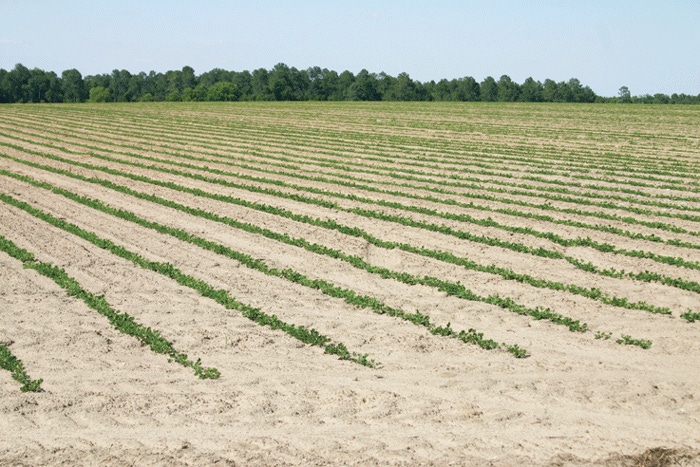
Dry weather pressuring Mississippi’s peanut crop
Drought delayed some planting in early May until a timely rain allowed the rest to be planted.Some replanting and some skimpy stands that producers are going to have to live with.Weeds are already a problem in the struggling crop.Pre-emergence herbicides are activated by rain, which did not fall, so producers are going back into the fields with post-emergence weed control.
June 17, 2011

About 40 percent of Mississippi’s peanut acres are under extreme drought, and unless rains come soon, it’s going to be a very bad year for the state’s crop.
Mike Howell, Mississippi State University Extension Service peanut specialist, said drought delayed some planting in early May until a timely rain allowed the rest to be planted.
“We’ve had significant stand problems, as there has not been enough soil moisture to get the plants established,” Howell said. “There was some replanting and some skimpy stands that producers are just going to have to live with.”
Weeds are already a problem in the struggling crop. Pre-emergence herbicides are activated by rain, which did not fall, so producers are going back into the fields with post-emergence weed control.
“These are not as effective for hard-to-control weeds, and the second application of herbicides is really hitting their budget for weed control,” Howell said.
Even with replanting, the crop was in the ground within the ideal planting window. Once established, peanuts are quite hardy — one of the state’s most drought-tolerant crops.
“They have to have moisture to bloom and set a crop, but they can go without rain for long periods of time and still make decent yields,” Howell said. “If we can get rains on a fairly regular basis, we can still make a good yield despite the problems we had at the beginning of the season.”
The dry weather is also contributing to insect problems. Howell said foliage feeders such as army worms and bollworms have started to invade fields, but below-ground pests such as false chinch bugs, burrower bugs, lesser corn stalk borers and wire worms become a problem when conditions are hot and dry.
“They’re looking for moisture,” Howell said. “The only product we have labeled to treat those pests requires rain to wash it into the soil, but if we get a rain, they run deeper into the soil and we don’t have to worry about them as much.”
Howell said a 2-inch rain that takes all day to fall across the state would solve a lot of the crop’s problems.
Don Self is co-owner of Self Farms in Hamilton, Miss., and a member of the National Peanut Board.
“We need a rain, but we’re not yet in what I would call dire straits for our peanut crop,” Self said in mid-June. “We need a rain within two weeks or we’ll be in bad shape.”
Self said the national posted price for peanuts on June 15 was $949.54 per ton. “It’s never been that high,” Self said. “There’s going to be a good market for peanuts if we have any to sell.”
The national peanut crop is expected to be down about 25 percent from last year, but Mississippi is expected to have just a slight decrease, to about 18,000 acres.
Heath Steede, George County Extension Service director, said that while peanut prices are good this year, cotton prices are better. “Cotton took some of our peanut acres because there’s more potential there for profit,” Steede said.
George County has more peanut acres than any other county in the state, and Steede said summer’s typical afternoon showers are starting to pop up, providing much-needed moisture in the county.
You May Also Like



